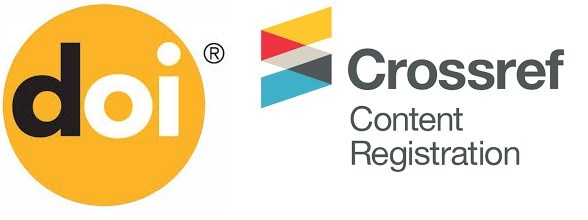Learning of Rational Numbers Through Semiotics Representations
DOI:
https://doi.org/10.46219/rechiem.v14i2.102Keywords:
Rational Numbers, Semiotic Representations, Didactic Engineering, Didactic StrategyAbstract
Despite the great efforts in time and dedication to achieve the expected learnings contained in the school curriculum, rational numbers continue to be a highly complex subject for high school students because they barely understand the most basic and elementary concepts. Based on Raymond Duval's Theory of Semiotic Representation Records (TRRS), three teaching strategies based on different semiotic representations were designed and implemented with Didactic Engineering approaches to favor the learning of rational numbers in first year high school students. In addition, the same activity was designed and applied, which served as pretest and posttest to compare results and to be able to realize if the didactic strategy helped the acquisition of the concept of rational number. From the results obtained, we were able to conclude that the activities served to increase the learning of the concept of rational number. .
Downloads
References
Artigue, M. (2014). Didactic Engineering in Mathematics Education. En S. Lerman (Ed.), Encyclopedia of Mathematics Education (pp. 159-162). Springer. https://doi.org/10.1007/978-94-007-4978-8_44
Artigue, M., Douady, R., Moreno, L., y Gómez, P. (1995). Ingeniería didáctica en educación matemática: Un esquema para la investigación y la innovación en la enseñanza y el aprendizaje de las matemáticas. Grupo Editorial Iberoamericano.
Cabañas, M. G. (2004). Situaciones didácticas en la comprensión del concepto de número racional en alumnos de nivel medio superior. Reportes de Investigaciones Terminadas, 181-187.
Cervantes, J. A., Ordoñez, J. S., García, M. D. S., y Hernández-Moreno, A. (2017). Teoría de registros de representaciones semiótica. Universidad Autónoma de Guerrero. https://www.researchgate.net/publication/315814323_TEORIA_DE_REGISTROS_DE_REPRESENTACIONES_SEMIOTICA/citations
Godino, J. D., Giacomone, B., Wilhelmi, M. R., Blanco, T. F., y Contreras, Á. (2015). Configuraciones de prácticas, objetos y procesos imbricadas en la visualización espacial y el razonamiento diagramático. ResearchGate: Departamneto de Didáctica de la Matemática, 1-21.
Geary, D., Berch, D., Ochsendorf, R., & Mann, K. (2017). Acquisition of complex arithme- tic skills and higher-order mathematics concepts. https://books.google.com.mx/books?id=m8LSDQAAQBAJ&printsec=frontcover&hl=es&source=gbs_ge_summary_r&cad=0#v=onepage&q&f=false
González-Forte, J. M., Fernández-Verdú, C., & Llinares, S. (2019). El fenómeno natural number bias: un estudio sobre los razonamientos de los estudiantes en la multiplicación de números racionales. Quadrante, 28(2), 32–52.
DGE, Dirección General de Epidemiología. (2020). [Archivo de video]. https://coronavirus.gob.mx/informacion-accesible/
Duval, R. (2017). Semiosis y Pensamiento Humano, Registros Semióticos y Aprendizajes Intelectuales (2.a ed.). Programa Editorial Universidad del Valle.
McMullen, J., Van Hoof, J., Degrande, T., Verschaffel, L., & Van Dooren, W. (2018). Profiles of rational number knowledge in Finnish and Flemish students – A multigroup latent class analysis. Learning and Individual Differences, 66, 70–77. https://doi.org/10.1016/j.lindif.2018.02.005
Obando, G. (2003). La enseñanza de los números racionales a partir de la relación parte-todo. Revista EMA, 8(2), 157–182.
Oviedo, L. M., Kanashiro, A. M., Bnzaquen, M., y Gorrochategui, M. (2012). Los registros semióticos de representación en matemática. Aula Universitaria, 13, 29-36. https://doi.org/10.14409/au.v1i13.4112
Pérez, M. (2020). La transición del lenguaje numérico al algebraico en secundaria. Una Propuesta Didáctica [Tesis de Maestría, Benemérita Universidad Autónoma de Puebla]. Repositorio Institucional- Benemérita Universidad Autónoma de Puebla.
Smith, J. P. (1995). Competent Reasoning With Rational Numbers. Cognition and Instruction, 13(1), 3–50. https://doi.org/10.1207/s1532690xci1301_1
Van Dooren, W., Lehtinen, E., y Verschaffel, L. (2015). Unraveling the gap between natural and rational numbers. Learning and Instruction, 37, 1–4. https://doi.org/10.1016/j.learninstruc.2015.01.001
Downloads
Published
How to Cite
Issue
Section
License
Copyright (c) 2022 Revista Chilena de Educación Matemática

This work is licensed under a Creative Commons Attribution 4.0 International License.











